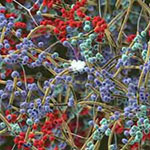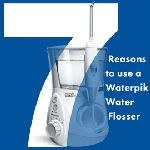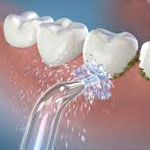
Does the WaterpikTM Water Flosser Remove Plaque? Myth vs. Fact
Contrary to past beliefs, clinical studies confirm that the WATERPIK water flosser effectively removes up to 99.9% of plaque, surpassing traditional string floss in plaque reduction.
As a dental professional, you may have been told that the water flosser cannot remove plaque. Conventional wisdom, even as recent as 10 years ago, had many of us believing this. But the clinical evidence says something different.
Independent Study Results
In 2005, the first clinical study comparing the WATERPIK water flosser to string floss found that water flossing provides enhanced plaque removal.
This finding was confirmed in a 2009 independent study at the University of Southern California Center for Dental Biofilms. Using scanning electron microscopy (SEM), researchers demonstrated that the water flosser removed up to 99.9% of plaque biofilm from the treated area.
A 2013 independent study added to the clinical evidence. Test subjects using a WATERPIK water flosser in conjunction with a manual toothbrush had up to 29% better reduction in plaque biofilm than people who used a manual toothbrush and string floss.
How Do Water Flossers Work?
The WATERPIK water flosser delivers a clinically proven combination of pulsation and pressure necessary to remove plaque. This is vastly different from simply swishing water, and much more effective.
Proven Plaque Removal
Over the past few years, 5 independent clinical research studies confirm that the WATERPIK water flosser is highly effective for removing plaque. But many dental professionals, such as myself, were not taught this in dental school. So, the myth persists.
But here's the bottom line: Science has proven that the WATERPIK water flosser can effectively remove plaque from hard-to-reach areas.
See how the pulsation and pressure remove plaque in this animation:
About Carol Jahn
Carol Jahn has a BS in Dental Hygiene from the University of Iowa and an MS in Continuing Education and Training Management from the University of St. Francis. She has been a dental hygienist since 1982. Carol is a lifelong active member of the ADHA and past treasurer.
Carol has presented over 200 courses in the U.S., Canada, Europe, and Asia. She has published more than 75 papers and contributed to 6 textbooks including the 10th and 11th editions of Clinical Periodontology.


